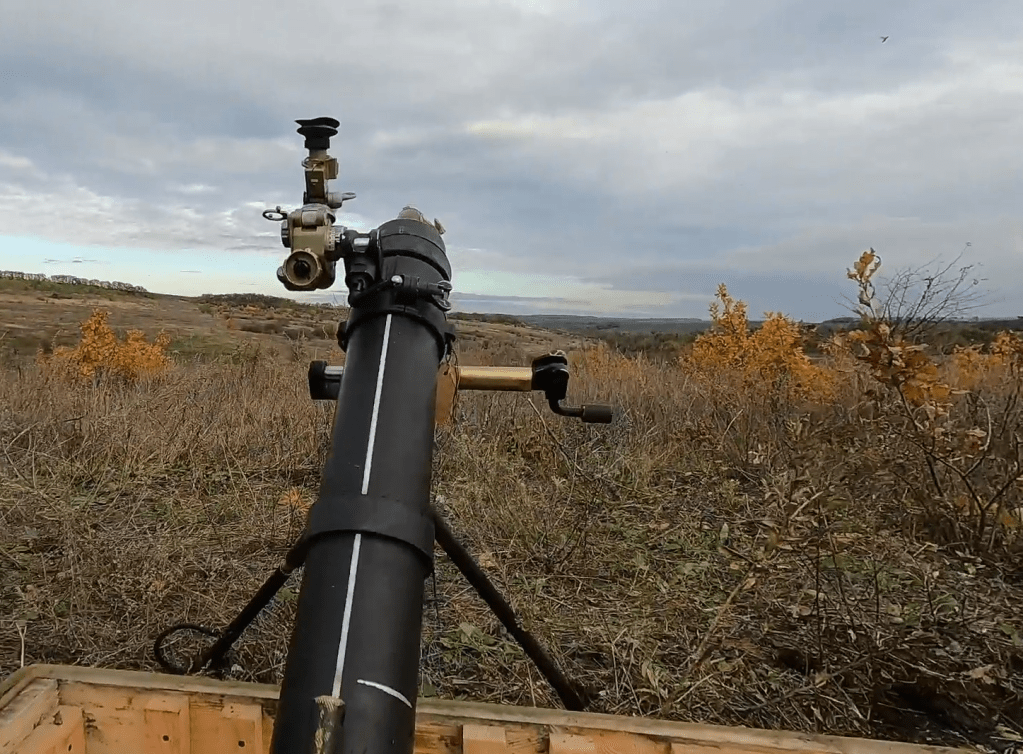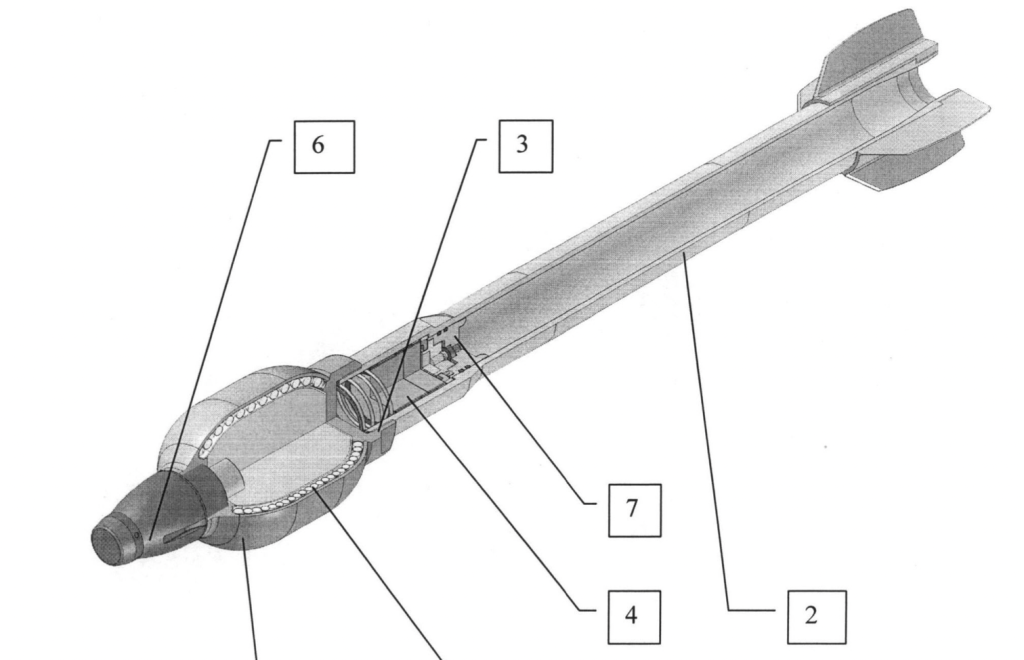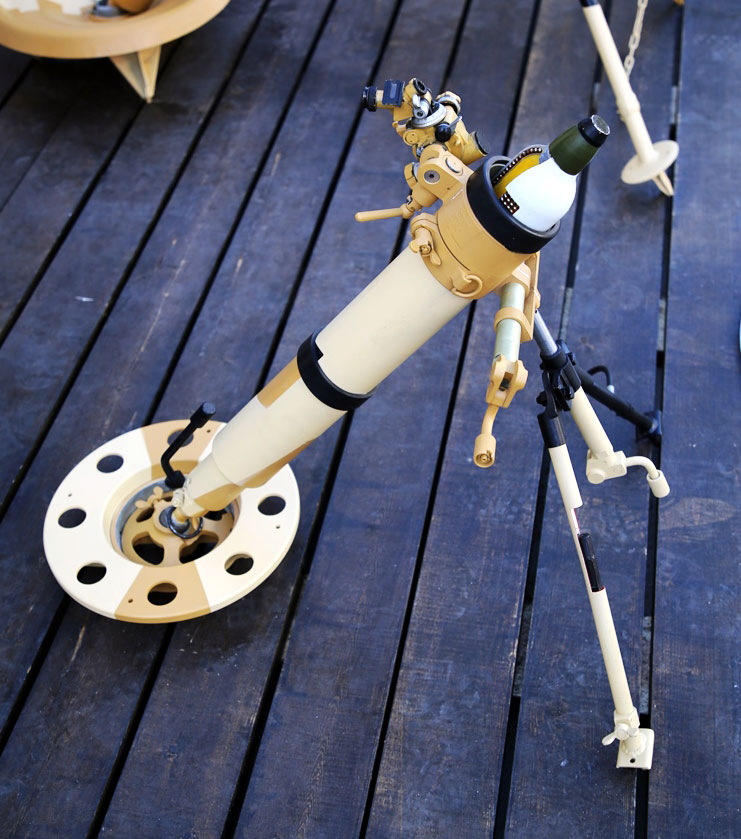Recent video and photos from Ukraine show Russian troops getting to grips with the 2B25 82mm mortar. About 10 months ago, before Russia’s invasion of Ukraine, The Armourer’s Bench examined the 2B25 in an article/video and how it combines a spigot mortar with ammunition which uses a self-contained captive piston. For a full run down on operation and the mortar’s development history check out that article/video. In this article we will take a look at the mortar’s appearance in Ukraine.
The first mention of the 2B25 being in use with Russian forces in Ukraine dates to early July, when RIA News, a Russian state-owned domestic news agency, published an article with scant detail other than to suggest that “these mortars are used to carry out sudden fire raids, in particular in the fight against saboteurs of the Armed Forces of Ukraine.” Despite this report we haven’t seen any imagery showing the weapon in theatre until recently.

In late October imagery showing the 2B25 began to be shared by a member of what appears to be a Russian special operations unit which has been in action in the Donetsk Oblast. One of the members of the unit runs a telegram channel. The soldier who runs the channel describes himself as a “regular soldier of the Armed Forces of the Russian Federation, for more than 10 years.”
On 27 October, a POV video was shared from behind a 2B25, with the caption (machine translated): “We got acquainted with a silent mortar, mastered it ourselves and showed the mobilized guys. A minimum of recoil, a minimum of powder gases and the sound of a round being fired.”

The 8 November saw the unit share a photo of the mortar being fired without its base plate, instead using a wooden box as an ad-hoc base. In the comments section of the image the soldier running the channel says the use of the wooden ammunition box was ‘by design’, perhaps indicating intentional experimentation with using the mortar without its base plate. In another comment he explained: “No…they checked… whether it was possible to shoot without sinking into the ground, as a result, the box fell apart.” In another response he notes that they were trying to avoid placing the base plate in the wet ground. When asked how loud the mortar is the Russian soldier describes it as: “It is silent, the exit of a mine is not louder than a clap of hands”
A photo posted on 26 November showed the Russian soldier with perhaps 10 of the 2B25’s 3VO35 mortar bomb laid out on the ground. On 30 November a clip showing the mortar be prepared alongside a commercial drone was posted, suggesting training to correct fall of shot with drones.

The longest video posted so far shows the mortar in action. Shared on 2 December the video shows the mortar dug into the ground with the operator firing three bombs in quick succession. Several seconds later we can hear them detonate down range. Again the video appears to show training and not operations. The machine translated caption describes a test with the 2B25 with the operators showing they could correct their fire with a drone, noting: “the accuracy and density of fire on the intended target increased significantly, the bombs hit the target one by one” Most recently, on the 3 December, a short clip with the caption “Another short video from our training” was shared showing the mortar being laid.
Update – 27/03/23: on 25 March a Russian telegram channel ‘Epoddubny’ shared a video featuring scouts operating around Bakhmut with a 2B25 82mm mortar. Below is a compilation of shots showing the mortar in action.
Update – 26/10/23: Additional footage, without location or date of filming, shared on Russian social media. Briefly showing the 2B25 in action with an additional 3VO35 mortar bomb near by.
Support Us: If you enjoyed this video and article please consider supporting our work here. We have some great perks available for Patreon Supporters – including early access to custom stickers and early access to videos! Thank you for your support!



